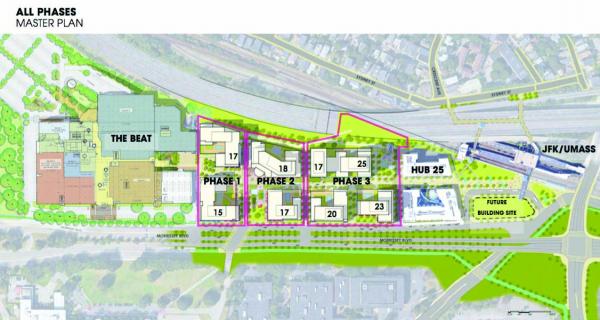February 10, 2021

A draft master plan from 2019 showed the phasing envisioned by Morrissey CFL Holdings for the redevelopment of parcels it controls along the Morrissey Blvd. corridor. The 75 Morrissey parcel is depicted in “Phase 1.” The developer sent word to city officials this week that it is changing its plan for the site.
A development team that previously said it would put two apartment high-rises on the site of the old Channel 56 studios on Morrissey Boulevard told the Boston Planning and Development Agency (BPDA) on Tuesday that it now wants to put up one residential building and one building for “life science/office” use.
The letter of intent, from David Raftery of Morrissey CFL Holdings, which bought the site from car dealer Herb Chambers, calls for a 175-unit apartment building and a research and office building with 250,000 square feet, along with 868 parking spaces.
The letter, which is supposed to indicate the impending submission of detailed plans, does not specify the building heights. A similar letter last year, however, called for buildings of 15 and 17 stories.
Both buildings would only be the first phase of an even larger development that would eventually include the neighboring Star Market and Beasley Media parcels. Morrissey CFL has said that along with its detailed plans, it would file a request for a “planned development area” in which the land’s existing zoning would essentially be tossed so the developer and the BPDA could negotiate on the details of the large project.
The filing comes one day before City Councillor Ed Flynn (South Boston, South End, Chinatown, Downtown) files a request for a hearing on whether residents should have more of a say in the planning of biotech research facilities in or next to residential areas. In his hearing request, Flynn says we’re seeing more such projects and that residents are growing concerned about just what sort of testing and research is being done in them.
“Residents should have a say in what gets built in their community, especially if it is a laboratory that can potentially impact public health and safety in the area,” he writes.


